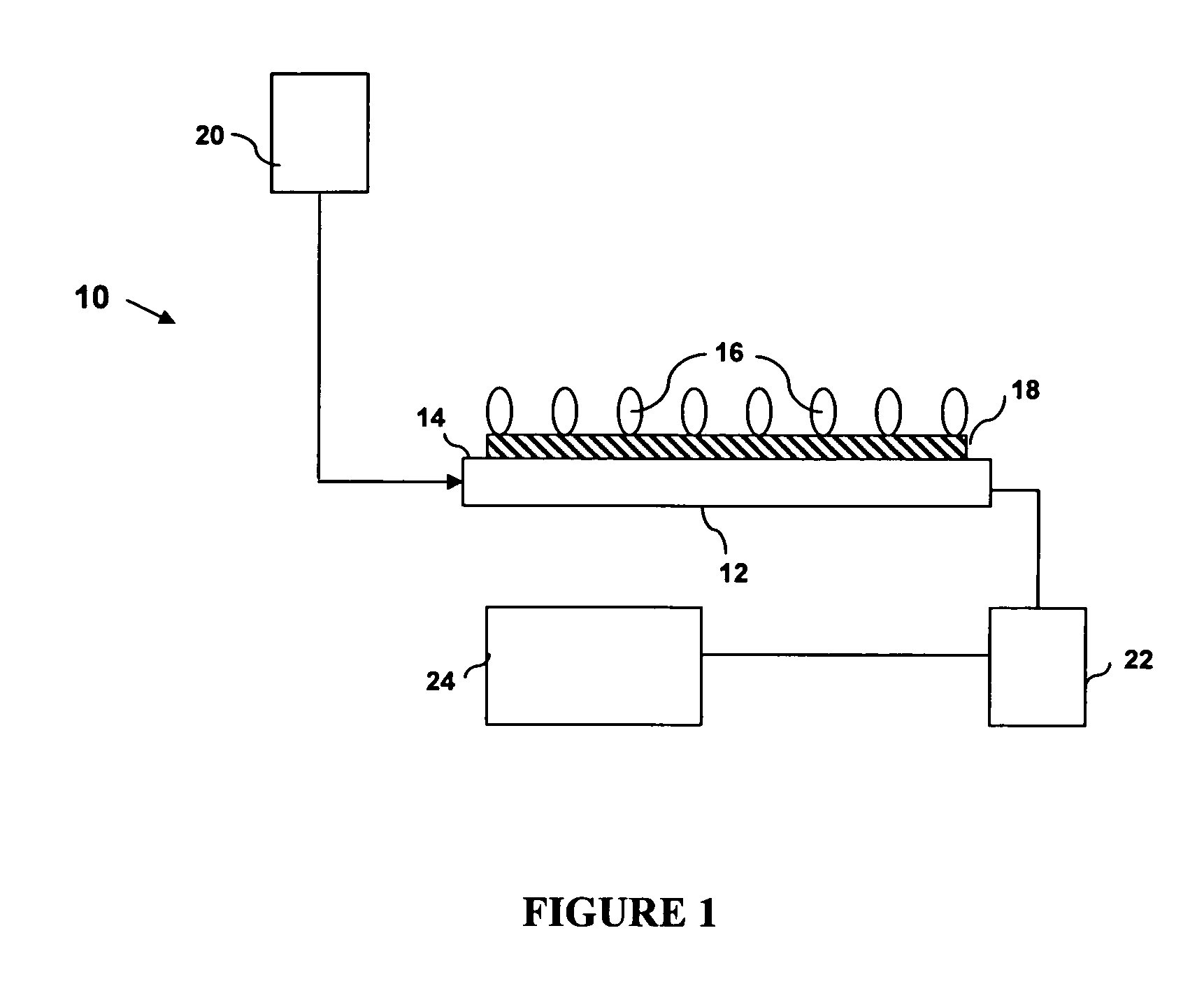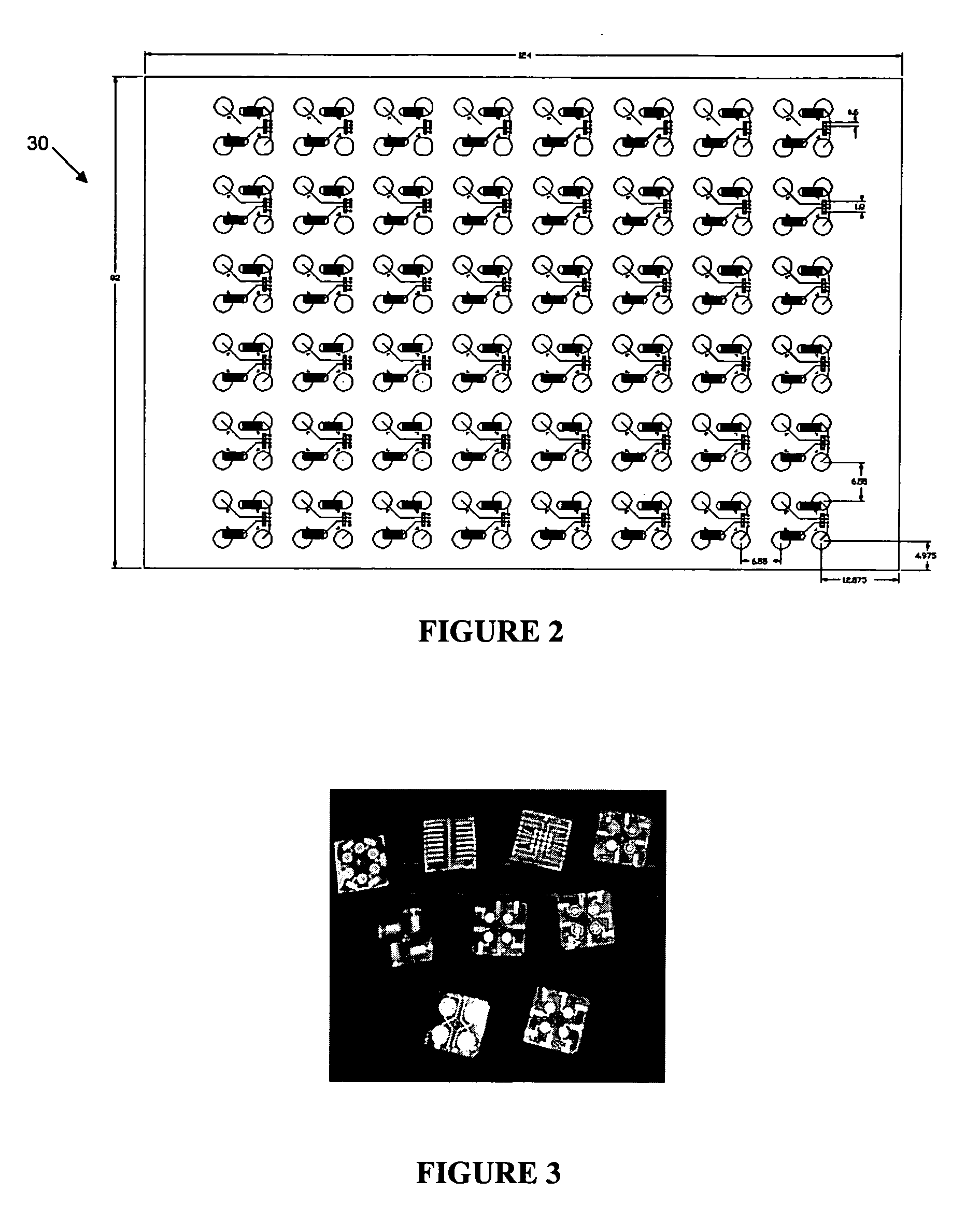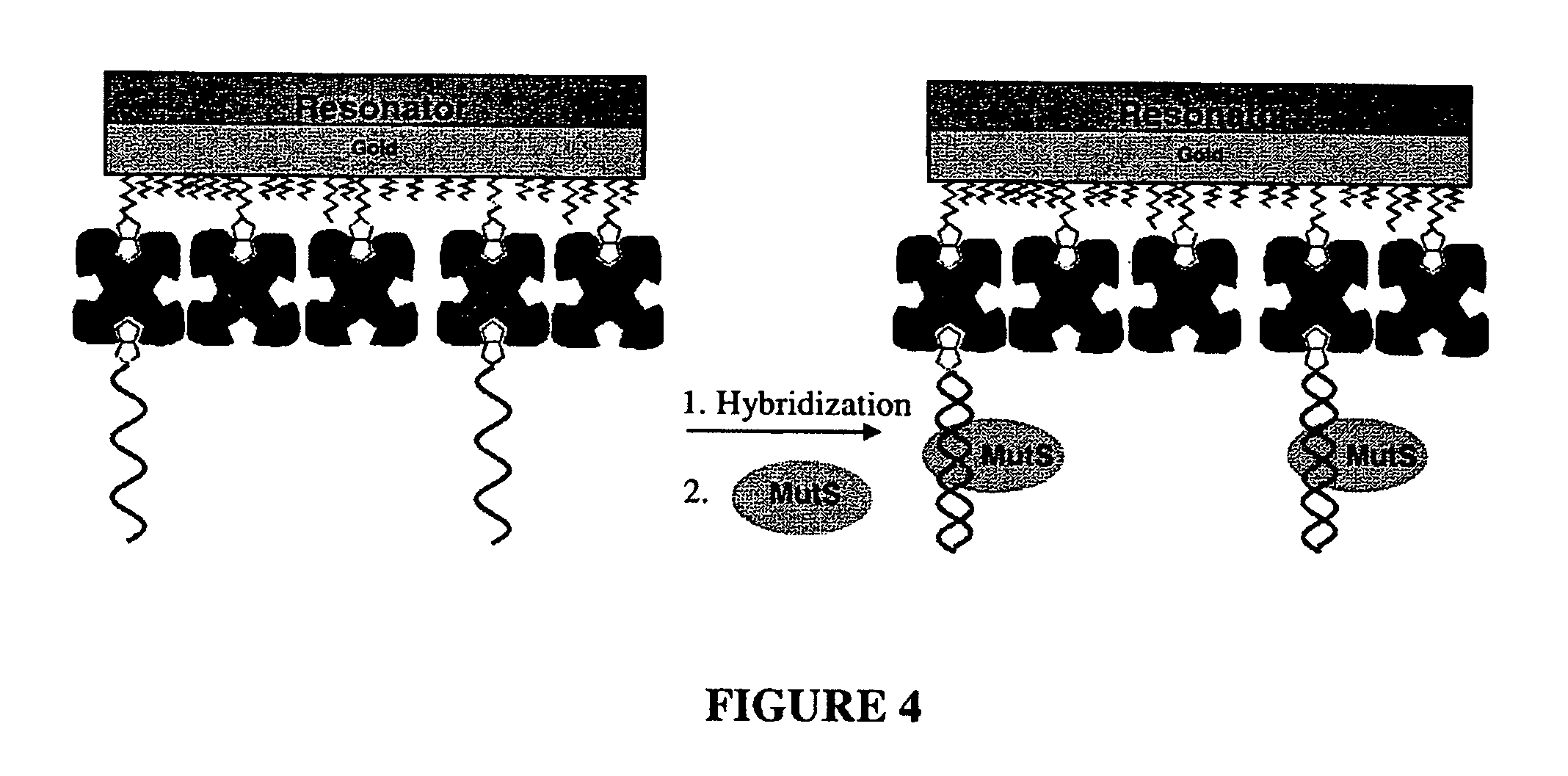Device and method of detecting mutations and polymorphisms in DNA
- Summary
- Abstract
- Description
- Claims
- Application Information
AI Technical Summary
Benefits of technology
Problems solved by technology
Method used
Image
Examples
example 1
[0111] Detection of G:T Mismatch using Method I: FIG. 6 shows the frequency response of a QCM to a whole reaction procedure using the method depicted in FIG. 4, starting from a biotin-thiol treated surface.
[0112] Briefly, streptavidin in PBS buffer (0.1 mg / ml) was immobilized on a surface which was first reacted with a biotin-thiol molecule based on biotin-streptavidin interaction. BSA was then applied (5 mg / ml in PBS) to block any possible free gold surface that might be present due to the low biotin self-assembled monolayer coverage. The baseline was determined using circulated Tris-HCl buffer (20 mM Tris-HCl, pH 7.5, 200 mM NaOH, 1 mM DTT, 0.1 mM EDTA, and 5 mM MgCl2), followed by MutS buffer blank alone, which contains the same amount of glycerol and Triton™ X-100 as in the MutS protein sample, which further contains MutS at a final concentration of 100 nM (diluted 1:200 from the stock buffer, using Tris-HCl buffer). The subsequent application of the MutS protein produced a bar...
example 2
[0118] Detection of 1 to 4 Deletions: In this example, probe 4 was immobilized and target DNAs (SEQ ID NOS.:5 to 8) (1 uM) were hybridized to form heteroduplexes containing 1 to 4 unpaired bases. Again, the hybridization profile between the MM0 and unpaired DNA showed no significant difference, while the subsequent MutS binding shows obvious difference in both the binding amount and binding kinetics. The consequent response frequency upon MutS binding these DNA was 92 Hz (unpaired CA), 90 Hz (unpaired C), 76 Hz (unpaired CAG), and 70 Hz (unpaired CAGG), which indicates that heteroduplexes containing 1 to 4 unpaired bases were detectable, but not equally well. This is likely due to differing binding affinities of MutS, resulting in different saturation amounts of MutS on each heteroduplex. The order of the detection sensitivity appeared to be 2 unpaired bases≧1 unpaired base>3 unpaired bases>4 unpaired bases. For the heteroduplex with 3 or 4 unpaired bases, the MutS binding was less ...
example 3
[0119] Motional Resistance Measurement of MutS Binding: In this experiment, the QCM sensor carrying a DNA heteroduplex containing two unpaired bases, CA, was connected to an S&A 250B Network Analyzer (Saunders & Associates, Inc., USA). The oscillation spectrum of the QCM before and after MutS binding was recorded (FIG. 10). FIG. 11 shows the kinetic curves of the frequency (A) and motional resistance (B) changes upon MutS binding on the unpaired CA DNA and a homoduplex DNA. The ratio between ΔR and ΔF for the MM0 (0.033) was greater than that for the unpaired CA (0.025). This difference is believed to relate to the different nature of the MutS binding to homoduplex DNA as compared to heteroduplex DNA. The adsorbed protein based on non-specific contact with the MM0 DNA backbone tends to be more flexible when compare to that based on unpaired bases recognition.
PUM
| Property | Measurement | Unit |
|---|---|---|
| Frequency | aaaaa | aaaaa |
| Energy | aaaaa | aaaaa |
| Affinity | aaaaa | aaaaa |
Abstract
Description
Claims
Application Information
 Login to View More
Login to View More - R&D
- Intellectual Property
- Life Sciences
- Materials
- Tech Scout
- Unparalleled Data Quality
- Higher Quality Content
- 60% Fewer Hallucinations
Browse by: Latest US Patents, China's latest patents, Technical Efficacy Thesaurus, Application Domain, Technology Topic, Popular Technical Reports.
© 2025 PatSnap. All rights reserved.Legal|Privacy policy|Modern Slavery Act Transparency Statement|Sitemap|About US| Contact US: help@patsnap.com



